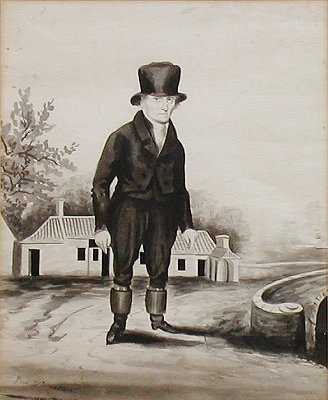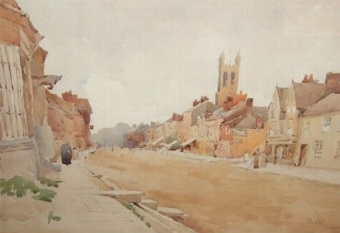featured item
the chateau de blois and st nicholas cathedral, blois from the river loire
- View other items in:
- antiques interior design modern and vintage
- other interior design
artware ltd
Enquire about this antique
Artware Ltd has 565 antiques for sale.
click here to see them all
inscribed and dated on the reverse " Blois St Nicholas / Sep 14th "
The famous Ch?teau de Blois, a Renaissance ch?teau once occupied by King Louis XII, is located in the centre of the city, and an 18th century stone bridge spans the Loire. As Blois is built on a pair of steep hills, winding and steep pathways run through the city, culminating in long staircases at various points. To the south of the city, the For?t de Russy is a remainder of the heavy woods that once covered the area.
Though of ancient origin, Blois is first distinctly mentioned by Gregory of Tours in the 6th century, and the city gained some notability in the 9th century, when it became the seat of a powerful countship with ?Blesum castrum? (?Le ch?teau de Blois?). In 1171, Blois was the site of a blood libel accusation against its Jewish community that led to 31 Jews (by some accounts 40) being burned to death. In 1196, Count Louis granted privileges to the townsmen; a commune, which survived throughout the Middle Ages, probably dated from this time. The counts of the Ch?tillon line resided at Blois more often than their predecessors, and the oldest parts of the ch?teau (from the thirteenth century) were built by them. In 1429, Joan of Arc made Blois her base of operations for the relief of Orleans. After his captivity in England, Charles of Orleans in 1440 took up his residence in the ch?teau, where in 1462 his son, afterwards Louis XII, was born. In the 16th century Blois was often the resort of the French court. The Treaty of Blois, which temporarily halted the Italian Wars, was signed there in 1504-1505.
The city''s inhabitants included many Calvinists, and in 1562 and 1567 it was the scene of struggles between them and the supporters of the Catholic church. In 1576 and 1588 Henri III, king of France, chose Blois as the meeting-place of the States-General, and in 1588 he brought about the murders of Henry, duke of Guise, and his brother, Louis, archbishop of Reims and cardinal, in the Ch?teau, where their deaths were shortly followed by that of the queen-mother, Catherine de'' Medici. From 1617 to 1619 Marie de'' Medici, wife of King Henri IV, exiled from the court, lived at the ch?teau, which was soon afterwards given by King Louis XIII to his brother Gaston, Duke of Orleans, who lived there till his death in 1660. The bishopric, seated at Blois Cathedral, dates from the end of the 17th century. In 1814 Blois was for a short time the seat of the regency of Marie Louise, wife of Napoleon I. Blois was occupied during World War II by the German army, which took the city on 18 June 1940. The city was liberated by American soldiers during the last two weeks of August, 1944. On both occasions, the city withstood several days of bombing.
Antiques.co.uk Ref: 5M7EUXNK
- Materials:
- Pencil and Watercolour
- Width (cm):
- 25.90 x 34.00 cm 10.20 x 13.39 ins
Artware Ltd
Artware Fine Art specialises in fine antique, decorative and historical portraits and topographical pictures . We cover a period from the 17th and 18th centuries through to the 19th & 20th Centuries. We have over 150 portraits in stock, which can be viewed on our web site, each historical portrait has well researched biographical information both on the sitter and the artist.
Contact details
18 La gare
51 Surrey row
London
Greater London
SE1 0BZ
UNITED KINGDOM
T: 0207 921 97904
E: greg@artwarefineart.com
W: www.artwarefineart.com












